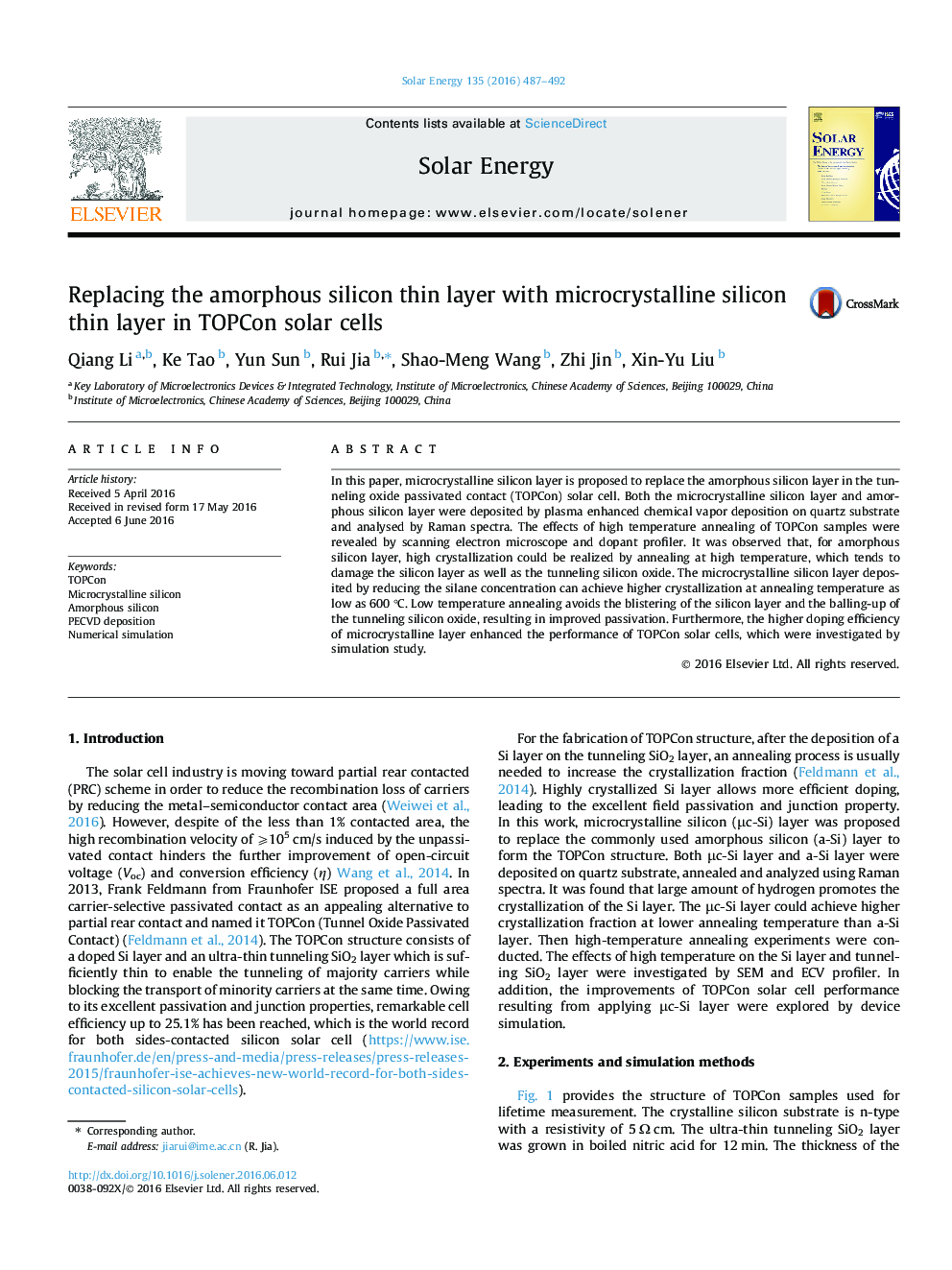| Article ID | Journal | Published Year | Pages | File Type |
|---|---|---|---|---|
| 7936783 | Solar Energy | 2016 | 6 Pages |
Abstract
In this paper, microcrystalline silicon layer is proposed to replace the amorphous silicon layer in the tunneling oxide passivated contact (TOPCon) solar cell. Both the microcrystalline silicon layer and amorphous silicon layer were deposited by plasma enhanced chemical vapor deposition on quartz substrate and analysed by Raman spectra. The effects of high temperature annealing of TOPCon samples were revealed by scanning electron microscope and dopant profiler. It was observed that, for amorphous silicon layer, high crystallization could be realized by annealing at high temperature, which tends to damage the silicon layer as well as the tunneling silicon oxide. The microcrystalline silicon layer deposited by reducing the silane concentration can achieve higher crystallization at annealing temperature as low as 600 °C. Low temperature annealing avoids the blistering of the silicon layer and the balling-up of the tunneling silicon oxide, resulting in improved passivation. Furthermore, the higher doping efficiency of microcrystalline layer enhanced the performance of TOPCon solar cells, which were investigated by simulation study.
Related Topics
Physical Sciences and Engineering
Energy
Renewable Energy, Sustainability and the Environment
Authors
Qiang Li, Ke Tao, Yun Sun, Rui Jia, Shao-Meng Wang, Zhi Jin, Xin-Yu Liu,
